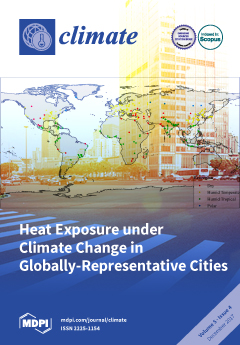Assessing human impacts on climate and biodiversity requires an understanding of the relationship between the concentration of carbon dioxide (CO
2) in the Earth’s atmosphere and global temperature (T). Here I explore this relationship empirically using comprehensive, recently-compiled databases of stable-isotope proxies from the Phanerozoic Eon (~540 to 0 years before the present) and through complementary modeling using the atmospheric absorption/transmittance code MODTRAN. Atmospheric CO
2 concentration is correlated weakly but
negatively with linearly-detrended T proxies over the last 425 million years. Of 68 correlation coefficients (half non-parametric) between CO
2 and T proxies encompassing all known major Phanerozoic climate transitions, 77.9% are non-discernible (
p > 0.05) and 60.0% of discernible correlations are negative. Marginal radiative forcing (ΔRF
CO2), the change in forcing at the top of the troposphere associated with a unit increase in atmospheric CO
2 concentration, was computed using MODTRAN. The correlation between ΔRF
CO2 and linearly-detrended T across the Phanerozoic Eon is positive and discernible, but only 2.6% of variance in T is attributable to variance in ΔRF
CO2. Of 68 correlation coefficients (half non-parametric) between ΔRF
CO2 and T proxies encompassing all known major Phanerozoic climate transitions, 75.0% are non-discernible and 41.2% of discernible correlations are negative. Spectral analysis, auto- and cross-correlation show that proxies for T, atmospheric CO
2 concentration and ΔRF
CO2 oscillate across the Phanerozoic, and cycles of CO
2 and ΔRF
CO2 are antiphasic. A prominent 15 million-year CO
2 cycle coincides closely with identified mass extinctions of the past, suggesting a pressing need for research on the relationship between CO
2, biodiversity extinction, and related carbon policies. This study demonstrates that changes in atmospheric CO
2 concentration did not cause temperature change in the ancient climate.
Full article





